
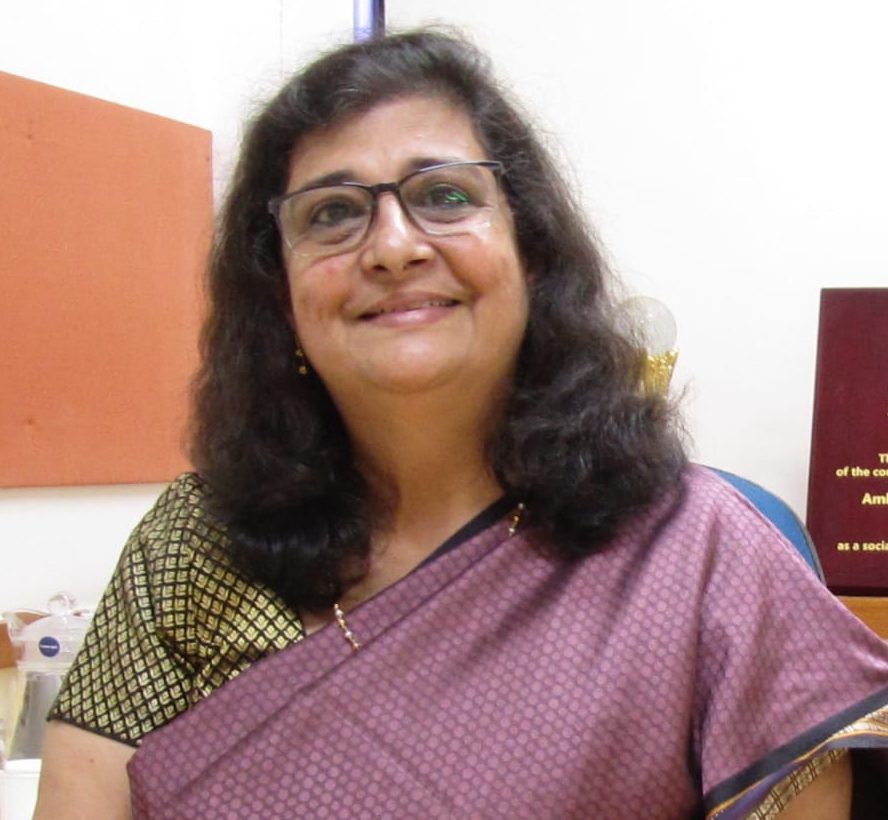
Over the past two decades, India has celebrated significant economic growth and poverty reduction – with official rates diving from 45 per cent in 1994 to 21 per cent in 2017. The pandemic, however, wreaked havoc on this progress – decimating both the economy and livelihoods in its wake, with an estimated 23 Crore Indians pushed into poverty, according to a study by Azim Premji University.
With the Indian Government setting plans to end poverty in its Strategy for New India @75, there is a renewed need for key investors in social development to put poverty eradication firmly back on their radar and play a role in tackling this complex problem.
Livelihoods cannot be viewed as one-dimensional. It is a multi-faceted issue. Whilst agriculture is the primary source of livelihood in rural India, progress in agriculture alone is not enough to see extensive changes in the lives of rural families. A multi-dimensional approach is required to solve the complex problem of rural poverty.
Rural vs Urban Poverty
Poverty, in its causes and solutions, is not uniform. India faces the problem of rural poverty and urban poverty, which are very different from one another. In a vast country like ours, rural poverty is almost ubiquitous. Urban poverty is also rising as people migrate from villages to cities searching for a better life – one they rarely find, as they suffer a lack of fundamental basics, like adequate housing and sanitation, which only exacerbate their poverty.

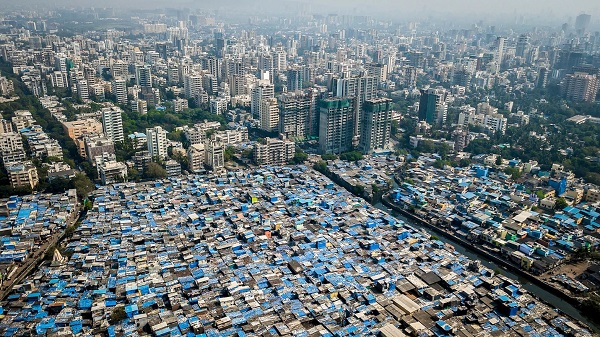
Whilst urban poverty is stark and, in your face, there is no denying that rural poverty is where the greatest gains can be made – if only we concentrate our efforts on generating livelihoods, improving standards of living and elevating the economic status of families.
Livelihoods cannot be viewed as one-dimensional. It is a multi-faceted issue. Whilst agriculture is the primary source of livelihood in rural India, progress in agriculture alone is not enough to see extensive changes in the lives of rural families. A multi-dimensional approach is required to solve the complex problem of rural poverty.
For any person to earn a livelihood, they require five sets of capital to support them.
To prosper, rural villagers need all these capitals and more to support them in their livelihood endeavours. Even if just one of them topples, the building blocks begin to fall.
The Livelihoods Framework – A Multi-Dimensional Approach to Tackling Poverty
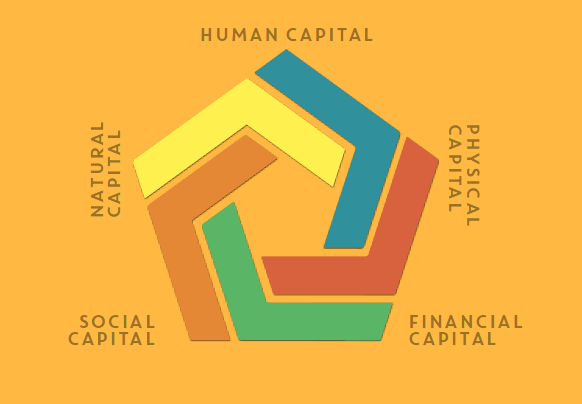 The Livelihoods Framework is not new but surely needs to be re-emphasised as an effective approach to tackling rural poverty in India. This approach sees a human being and their ability to generate a livelihood in a five-pronged, multi-dimensional way.
The Livelihoods Framework is not new but surely needs to be re-emphasised as an effective approach to tackling rural poverty in India. This approach sees a human being and their ability to generate a livelihood in a five-pronged, multi-dimensional way.
In this context, a person not only requires human capital in the form of skills, knowledge, abilities and capabilities to derive an income, but they also need physical capital like infrastructure, tools, uniforms, books, and a roof over their heads.
People need skills, but if their health is compromised, skills do not matter. They need an education, but if they cannot access a loan when they need one, they get into a vicious cycle of debt. They need technical know-how, but if there is no water for the family or their livestock, it is of little help. They need bargaining power, but if they do not work together, their voices will not be heard. Development agencies, therefore, need to address all of these areas if they are to be successful in helping lift a rural family out of poverty via livelihoods; but it is possible.
Financial capital, in the form of income, credit or investments, is crucial, but so does social capital – benefits via relationships with other people and community institutions.
And all-important is the natural capital – the land, its rivers, water bodies and ponds, forests and trees – that the rural poor so heavily rely upon to survive.
To put it more simply, people need skills, but if their health is compromised, skills do not matter. They need an education, but if they cannot access a loan when they need one, they get into a vicious cycle of debt. They need technical know-how, but if there is no water for the family or their livestock, it is of little help. They need bargaining power, but if they do not work together, their voices will not be heard.
Development agencies, therefore, need to address all of these areas if they are to be successful in helping lift a rural family out of poverty via livelihoods; but it is possible.
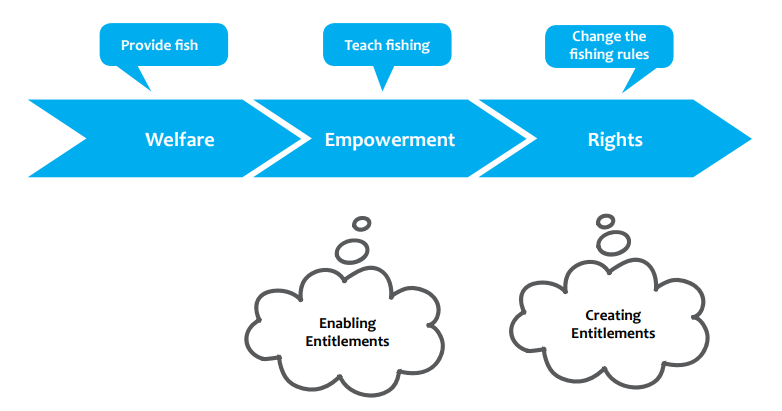 Over-Reliance on Agricultural Livelihoods
Over-Reliance on Agricultural Livelihoods
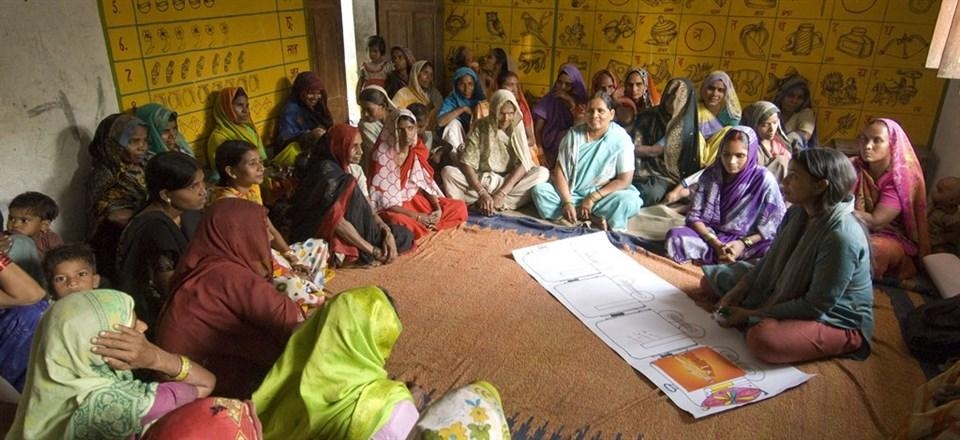 Whilst transformation in agriculture can yield impressive results – it underpins the entire rural economy and most family households within it – there is a desperate need for rural families to diversify their income sources. Through diversification, families can reduce risks, create
Whilst transformation in agriculture can yield impressive results – it underpins the entire rural economy and most family households within it – there is a desperate need for rural families to diversify their income sources. Through diversification, families can reduce risks, create 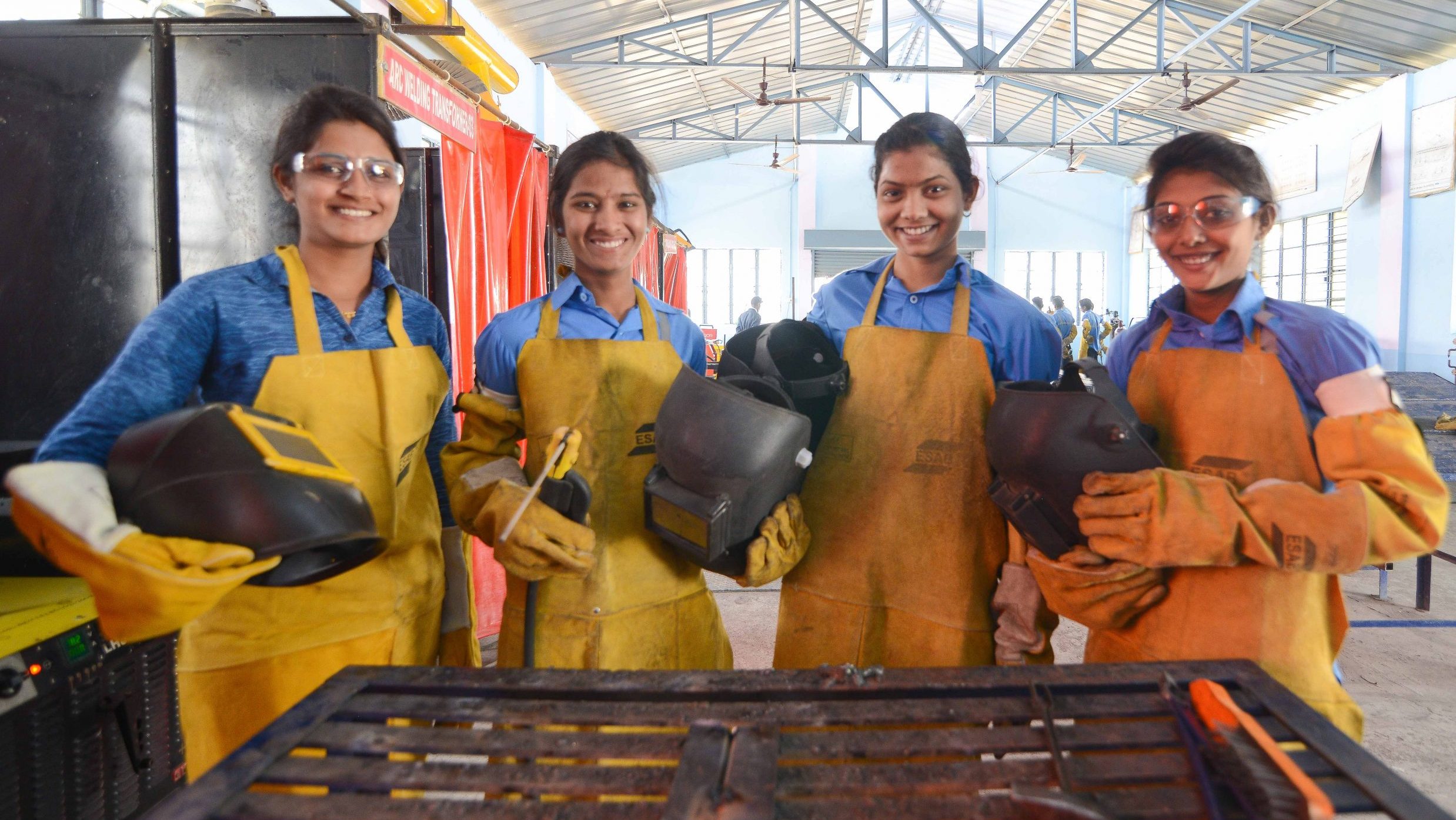 multiple sources of income streams and slowly lift themselves out of poverty.
multiple sources of income streams and slowly lift themselves out of poverty.
How can they achieve this? Women can join self-help groups to enable savings and credit and get involved in nano enterprises for additional income generation. The youth can enrol in vocational training to acquire industry-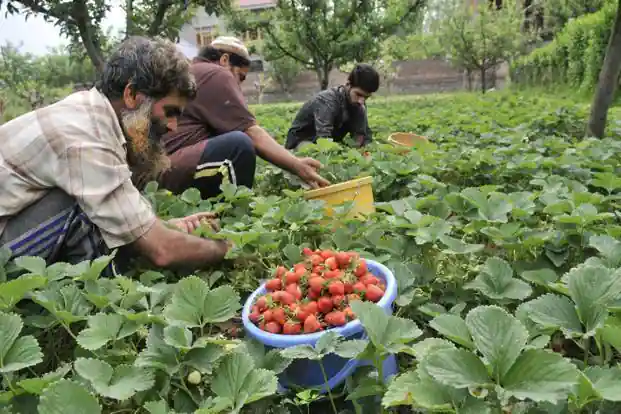 based skills and either get a job or try entrepreneurship by starting their own small business. Farmers can diversify their agricultural pursuits by engaging in animal husbandry or venturing into horticulture and vegetable cultivation to take the pressure off mainstay crops. By adopting a mix of multi-layered activities, a family can get the edge they need to
based skills and either get a job or try entrepreneurship by starting their own small business. Farmers can diversify their agricultural pursuits by engaging in animal husbandry or venturing into horticulture and vegetable cultivation to take the pressure off mainstay crops. By adopting a mix of multi-layered activities, a family can get the edge they need to 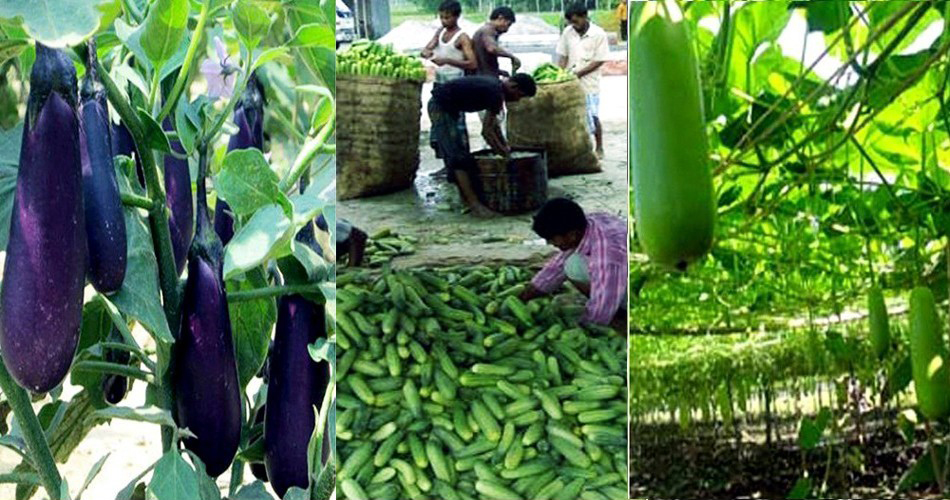 lift themselves out of poverty.
lift themselves out of poverty.
Additionally, there is a desperate need to see the entrepreneurialism, booming in India’s major urban centres, percolate down to smaller towns and districts throughout the country. According to The Future of India: The Winning Leap, a report by Price Waterhouse Coopers, the success of small and micro-enterprises in rural India can be transformative due to the multiplier effect that enterprises tend to have, and the important role they play in job creation. Rural entrepreneurs must be nurtured and encouraged to help stimulate diverse opportunities and stimulate local rural economies.
With this approach, vulnerabilities can be reduced. Climate variabilities, disasters and even pandemics can be mitigated if a family has more than one livelihood upon which to rely. And wherever rural families prosper due to such varied activities, the issue of rural migrants chasing a livelihood in the big city and living in the shackles of urban poverty can also cease to exist as they reverse migrate – return to their rural homes, which is where they ultimately want to be; with their families.
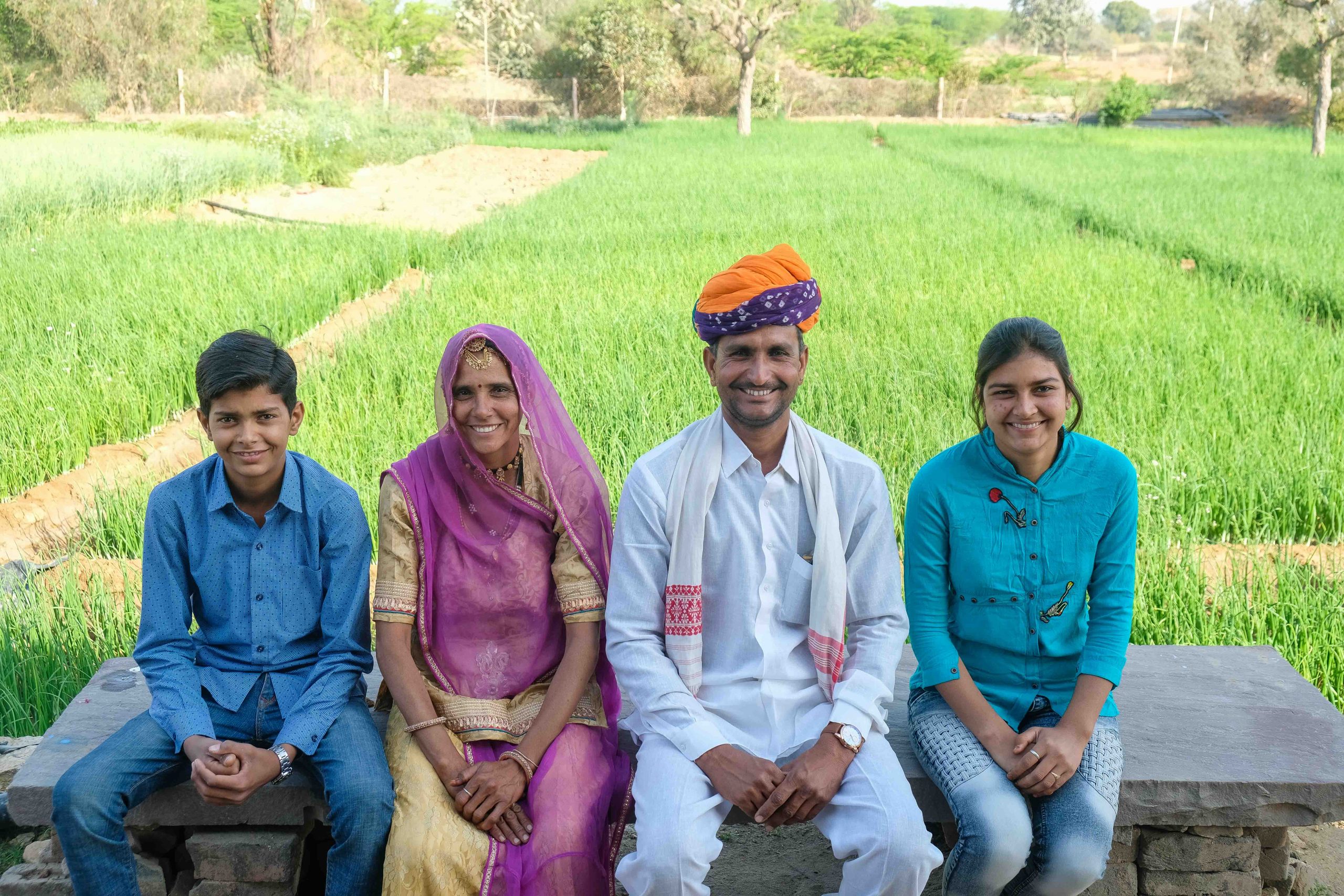
Poverty Line vs Empowerment Line
But we must also recognise that taking a family out of poverty is never enough. Many families that have officially come out of poverty still live in dire and difficult circumstances. A report in 2012 depicted that 56 per cent of the population of India are rural families that did not have a level of income to enable them to live a decent quality of life, rather than just bare subsistence.
Income levels, therefore, need to be sufficient enough to enable them to meet at least the eight basic household needs – food, housing, drinking water, sanitation, healthcare, education, energy and social security.
The task to eradicate rural poverty is immense, with many districts awaiting development and prosperity. But to get started, families need to be enabled. They need guidance and support. They need to be collectivised formally. This is where the role of CSR bodies, NGOs, Government and Civil Society comes to the fore.
 We need to look beyond the poverty line and start thinking about taking families instead toward the Empowerment Line.
We need to look beyond the poverty line and start thinking about taking families instead toward the Empowerment Line.
The Empowerment Line is a concept developed by the McKinsey Global Institute and looks at poverty eradication through a different lens.
According to their report From Poverty to Empowerment, we need to ask ourselves an entirely different question: What is the level of consumption required for an individual to meet the necessities of human development to meet those eight basic household needs? This is where we need to set our sights as investors in poverty eradication.
Conclusion
Focusing poverty alleviation efforts on a multi-dimensional approach to livelihoods to lift the incomes of small and marginal families is one of the most direct routes to addressing rural poverty. It must be prioritised by all those who are serious about eradicating poverty from India – for when a family’s livelihood is strengthened, it has the means to focus on its 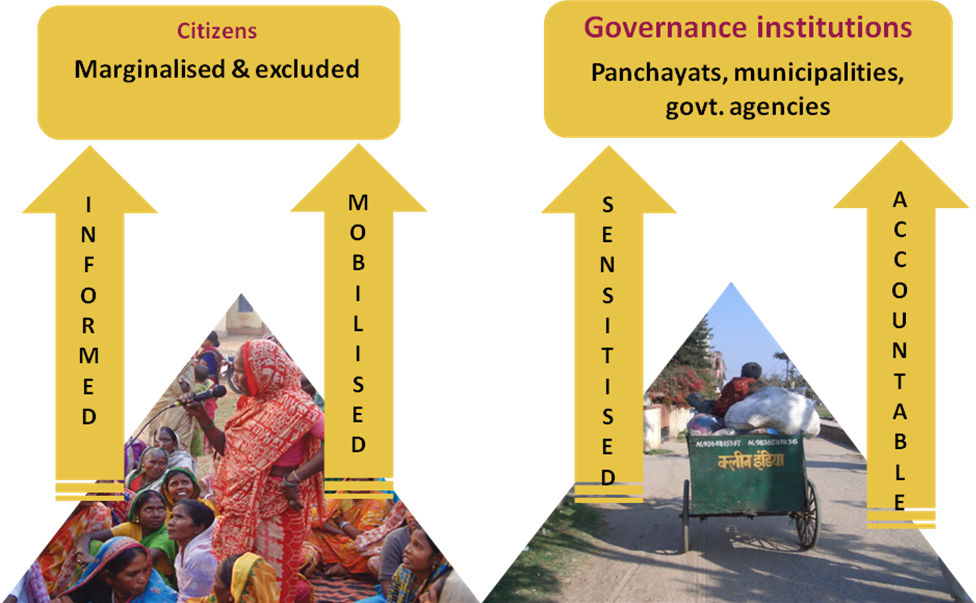 health, children, household and the community.
health, children, household and the community.
The task to eradicate rural poverty is immense, with many districts awaiting development and prosperity. But to get started, families need to be enabled. They need guidance and support. They need to be collectivised formally. This is where the role of CSR  bodies, NGOs, Government and Civil Society comes to the fore.
bodies, NGOs, Government and Civil Society comes to the fore.
Ending rural poverty is achievable – but only if we collaborate, empower communities and encourage local people to take ownership. With a holistic approach to livelihoods, success is assured, and the future of rural India can be one of prosperity.

